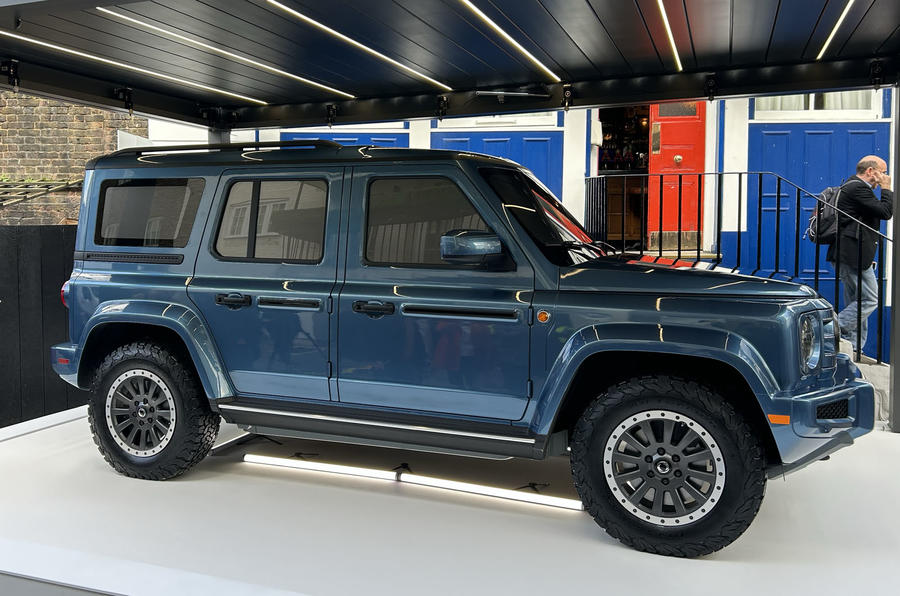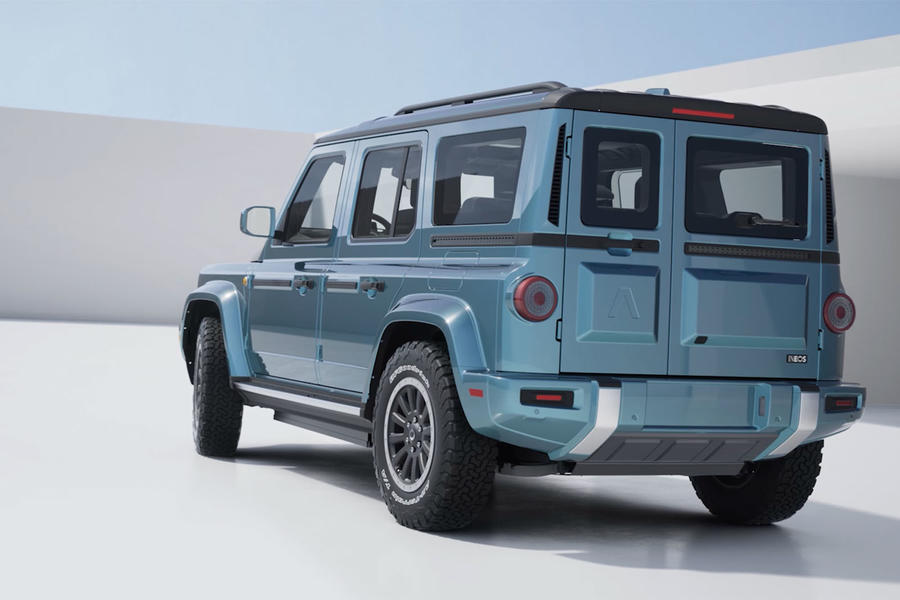Fusilier is smaller and slightly sleeker than the Grenadier
Grenadier’s smaller sibling is first electric Ineos, due on sale in 2027 with extreme off-road ability
Ineos has revealed the Fusilier as a smaller sibling to the Grenadier, bringing the option of pure-electric power and claiming “world-class off-road capability”.
The 4×4 company’s third model – after the Grenadier SUV and closely related Quartermaster pick-up – is based on a new EV-oriented skateboard architecture, completely separate from the company’s existing ladder-frame structure.
It’s due to be built in Austria from early 2027 by Magna, which also builds the Jaguar I-Pace, Fisker Ocean and, most pertinently in the case of the Fusilier, the Mercedes-Benz G-Class.
The pure-electric version of the Fusilier will be sold alongside a range-extender (REx) derivative that will no doubt give owners to fully exploit its off-road credentials with minimal fear of running out of battery in remote areas – although Ineos has yet to give full technical details for either variant.
The company said the EV has a targeted range of 249 miles and the REx will have around 70% of the EV’s battery capacity to give roughly 168 miles of range with the engine off.
The batteries will be supplied by Samsung and assembled in Hungary, but Ineos has yet to decide on a specific chemistry.

Both cars will have an electric motor at each end for four-wheel drive and will be engineered to perform effectively on challenging terrain, CEO Lynn Calder told Autocar.
“This will be a serious off-road vehicle, not just something with some e-diffs,” she said. “It might be a bit softer as it’s not on a ladder frame but it will pass all our tests or we wouldn’t do it.”
Calder added, however, that the Fusilier will forego the Grenadier’s recirculating-ball steering – which minimises kick-back off-road but has been criticised for its responsiveness and predictability – in the name of improved on-road behaviour.
“I stand by the steering of the Grenadier, for sure, but I understand the criticism. This is rack-and-pinion steering so much more acceptable in urban environments.”
Company founder and chairman Sir Jim Ratcliffe said Ineos is offering the REx powertrain because “we’re beginning to understand the clear limitations of battery-electric in certain situations”.
He added: “We have to have [an EV] whether we like it or not, but we like it, as it’s important to the world.
“The US takes a different view to the EU in wanting to see the trajectory on CO2 go down, but they are open to different solutions and don’t want to force customers.
“Our instinct was to follow the industry with an EV, but a few months ago we paused. My big problem with EVs is that there are two huge failings: they don’t do A to B as a decent journey and you can’t then fill it up.”
The REx’s petrol engine – from an as-yet undetermined supplier – will function as a generator to give power to the electric motors and will major on simplicity and efficiency.
“It’s very small with a steady state. It’s very efficient and a simple piece of equipment, with no variable valves or anything,” said Ratcliffe.
Ineos estimates that this variant will emit 20-30% of the CO2 of a conventional ICE model.

Ratcliffe continued: “BEVs are perfect for certain uses – shorter trips and urban deliveries – but industry and governments need to have realistic expectations around other technologies that can help accelerate the necessary pace of change. That is the reason we are offering an additional powertrain for the Fusilier, one that dramatically reduces emissions but has the range and refuelling capabilities needed.”
The decision to add a REx option was only made in the past few weeks and has prompted Ineos to push back the Fusilier’s planned launch date from 2026 to early 2027.
The Fusilier will also be engineered and developed by Magna. Notably, part of the development programme will involve durability testing on the infamously challenging Shöckl Pass – a proving ground for every iteration and variant of the venerable G-Class so far and now Ratcliffe’s own benchmark.
Ratcliffe has previously laid bare the importance of the Fusilier’s off-road credentials, telling Autocar: “Because it’s electric, it will inevitably carry a bit of a weight penalty, but my expectation is that it will still have the range and capability of the Grenadier. We aren’t going to compromise.”
The EV and REx cars will look identical. The Fusilier’s visual relationship with the Grenadier is plain to see, but unlike the Quartermaster, it’s a standalone model line. As such, it’s fundamentally different underneath, as well as smaller in all dimensions than its full-sized, 4.7m-long sibling.

The visual differences mostly relate to the Fusilier’s greater focus on aerodynamic efficiency, which is key to optimising EV range: the blocky silhouette’s edges and corners have been rounded off, the windows are flush with the bodywork, the door hinges are recessed and there are active grille shutters at the front.
Designer Toby Ecuyer said: “There’s a clear lineage of the Grenadier to respect. We have a clear brief now on what an Ineos is. In some ways it’s now a bit easier, but with a different way to propel the car it has become engineering-led to a degree.”
The company has yet to reveal the interior, but has confirmed it major on physical buttons and switches, like the Grenadier.
Ratcliffe said: “I can’t stand going through three layers of menus to put the seat heaters on.”
Ineos remains tight-lipped on projected pricing for its new model but suggested it’s unlikely to be substantially cheaper than the Grenadier, because the cost of a battery is “three times” the cost of a combustion engine.
Calder said: “The REx might therefore be cheaper than the EV version, purely as the battery is smaller.”
Further details of the Fusilier will be revealed in the run-up to its launch in around two years time, and Ineos is expected to soon start revealing details of a more compact, urban-focused crossover and larger, luxurious range-topper that will top and tail its line-up by the end of the decade.
Notably, the Land Rover Defender, Toyota Land Cruiser and Mercedes G-Class – the Grenadier’s key rivals – are each set to spawn more compact, electric derivatives in this vein in the coming years.
Source: Autocar
